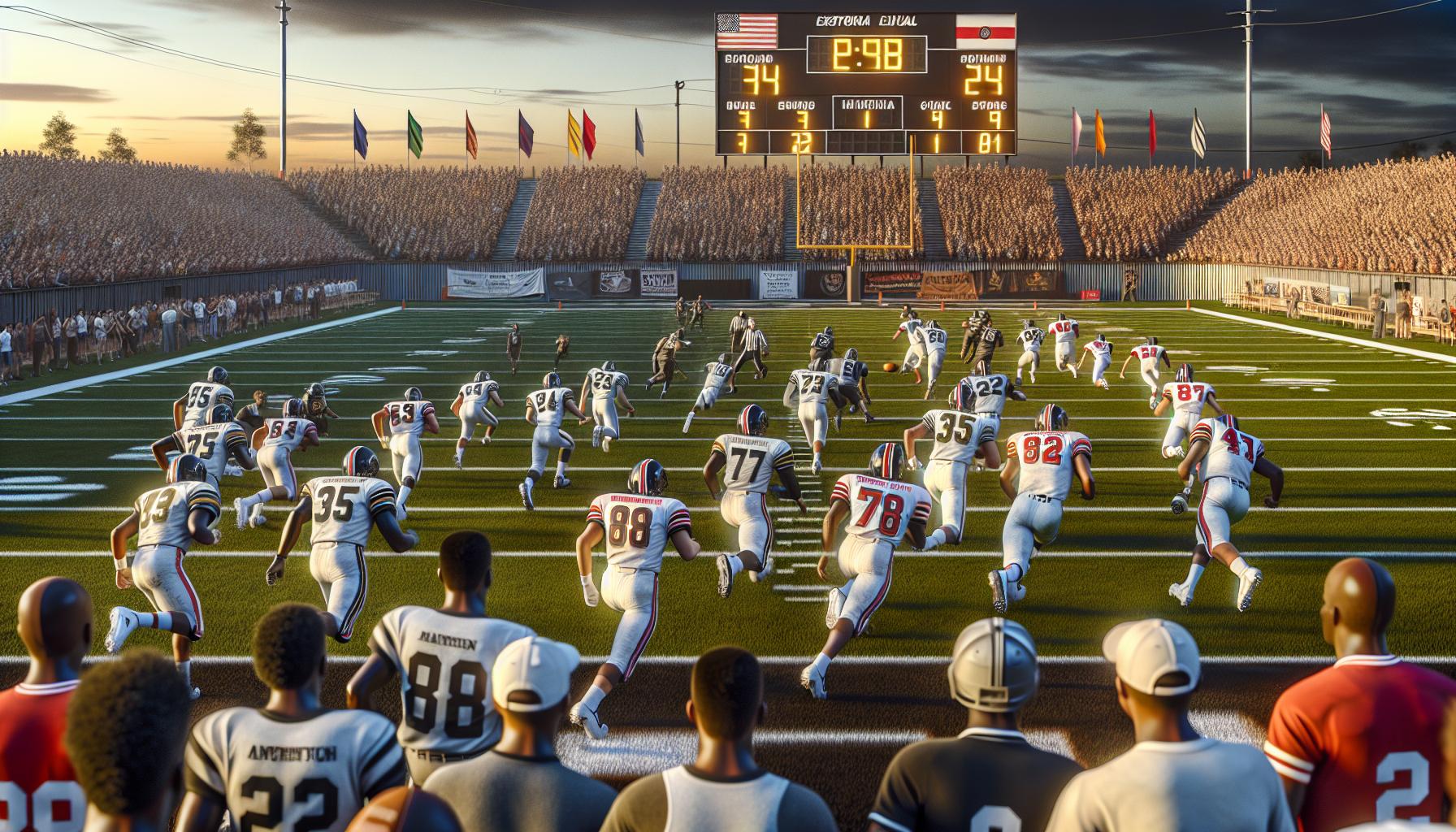
How Long Is a Quarter in High School Football? Complete Guide
High school football captivates communities across the nation, bringing together students, families, and fans every Friday night. Understanding the game’s structure is essential for players and enthusiasts alike. One fundamental aspect is the length of a quarter, which can influence strategies and player performance.
Typically, a quarter in high school football lasts 12 minutes, aligning with regulations set by athletic associations. This timeframe allows teams to showcase their skills while maintaining an exciting pace. Whether you’re a coach planning game tactics or a fan eager to dive deeper into the action, knowing how long a quarter runs can enhance your appreciation of the sport.
Understanding High School Football Quarters
High school football games are divided into four quarters, each lasting twelve minutes, as regulated by the National Federation of State High School Associations (NFHS). This standardized timeframe structures the game’s progression and influences team strategies.
Quarter Duration
- Length: Each quarter spans twelve minutes.
- Halftime: A fifteen-minute break occurs between the second and third quarters.
- Intervals: Short breaks separate each quarter, allowing teams to regroup.
Impact on Game Strategy
Teams leverage the twelve-minute quarters to optimize offensive and defensive plays. Efficient clock management is essential, particularly in the final minutes, affecting decisions such as play selection and timeouts.
Comparison with Other Levels
| Level | Quarter Length |
|---|---|
| High School | 12 minutes |
| College | 15 minutes |
| NFL | 15 minutes |
High school quarters are shorter than those in college and professional leagues, resulting in faster-paced gameplay and necessitating swift strategic adjustments.
Time Management
Effective time management within twelve-minute quarters allows teams to maintain momentum and control the game’s flow. Coaches prioritize quick scoring opportunities and defensive stops to maximize their limited timeframe.
Player Performance
The twelve-minute duration impacts player stamina and performance. Shorter quarters require peak physical condition and strategic resting periods to maintain high energy levels throughout the game.
Standard Quarter Duration

Each quarter in high school football lasts twelve minutes. This duration, set by athletic associations, shapes team strategies and gameplay.
Regulation Time
High school football games consist of four 12-minute quarters. Athletic associations, such as the NFHS, enforce this schedule to ensure consistency across all games. Teams focus on effective clock management and strategic play selection within this timeframe. Compared to college and NFL quarters, which last 15 minutes, the shorter duration results in a faster-paced high school game. This requires players to maintain high stamina and coaches to optimize play-calling for quick decision-making.
Overtime Periods
If the game is tied at the end of regulation, high school football uses overtime periods to determine a winner. Each overtime period also lasts twelve minutes, maintaining consistency with standard quarter lengths. Overtime rules are governed by state athletic associations and typically involve alternating possessions or sudden death scenarios. This structure ensures that the outcome is decided efficiently while preserving the balance and pacing established during regulation time.
Factors Influencing Quarter Length
Several elements impact the duration of each quarter in high school football, ensuring the game maintains its structure and flow.
Game Interruptions
Game interruptions extend quarter lengths by introducing unforeseen delays. These interruptions include:
- Injuries: Medical evaluations pause the game until players are safe.
- Penalties: Officials review and enforce rule violations, causing brief stoppages.
- Administrative Reviews: Instant replay decisions or rule clarifications require additional time.
Such interruptions require effective time management to maintain the game’s pace and uphold the standard twelve-minute quarter structure.
Media Timeouts
Media timeouts adjust quarter lengths by accommodating broadcasting requirements. These timeouts involve:
- Commercial Breaks: Scheduled pauses allow for advertisements without altering game flow.
- Interviews: Post-play or halftime interviews with coaches and players necessitate brief delays.
- Replay Analysis: Media reviews of key plays provide viewers with in-depth insights.
Implementing media timeouts ensures that the game remains accessible to a broader audience while preserving the integrity of the twelve-minute quarter duration.
Comparison With Other Football Levels
Quarter lengths vary across different football levels, affecting game pace and strategy.
Middle School Football Quarters
Middle school football quarters last 8 minutes each, shorter than high school’s 12-minute quarters. This duration suits younger players’ stamina and skill levels. Coaches emphasize basic skills and shorter play sequences, ensuring players stay engaged and manage their energy effectively during the game.
College Football Quarters
College football quarters extend to 15 minutes each, aligning with NFL standards. The longer timeframe supports more complex strategies and plays, reflecting higher skill and endurance levels of collegiate athletes. Teams focus on clock management and detailed tactical planning to maximize scoring opportunities and maintain defensive strength throughout the extended periods.
| Football Level | Quarter Length |
|---|---|
| Middle School | 8 minutes |
| High School | 12 minutes |
| College/NFL | 15 minutes |
Implications For Players And Coaches
The twelve-minute quarter duration influences player conditioning and endurance. Players train to sustain high performance throughout each quarter, as shorter intervals require rapid recovery between plays.
Coaches develop strategies based on quarter length. They prioritize time-efficient plays and clock management techniques to maximize scoring opportunities within the limited timeframe.
Effective communication is essential for both players and coaches. Clear signals and quick decision-making ensure teams adapt swiftly to the fast-paced game environment.
Time management impacts substitution patterns and player rotations. Coaches allocate specific roles to maintain stamina, allowing players to perform consistently during each twelve-minute segment.
Training regimens focus on enhancing agility and resilience. Players engage in drills that improve speed and reduce fatigue, aligning with the demands of shorter quarters.
Game planning includes contingency measures for injuries and penalties. Coaches prepare alternative strategies to maintain momentum despite unexpected interruptions within the twelve-minute periods.
This structure shapes the overall approach to gameplay, emphasizing efficiency and adaptability for both players and coaches.
Conclusion
Understanding the twelve-minute quarter in high school football enhances appreciation for the sport’s dynamics. This timeframe shapes how teams strategize and maintain momentum throughout the game. It fosters a fast-paced environment that keeps players engaged and fans excited. By recognizing the impact of quarter length, coaches and athletes can better prepare to excel on the field. The standardized structure ensures consistency, contributing to the enduring popularity and competitive spirit of high school football.



